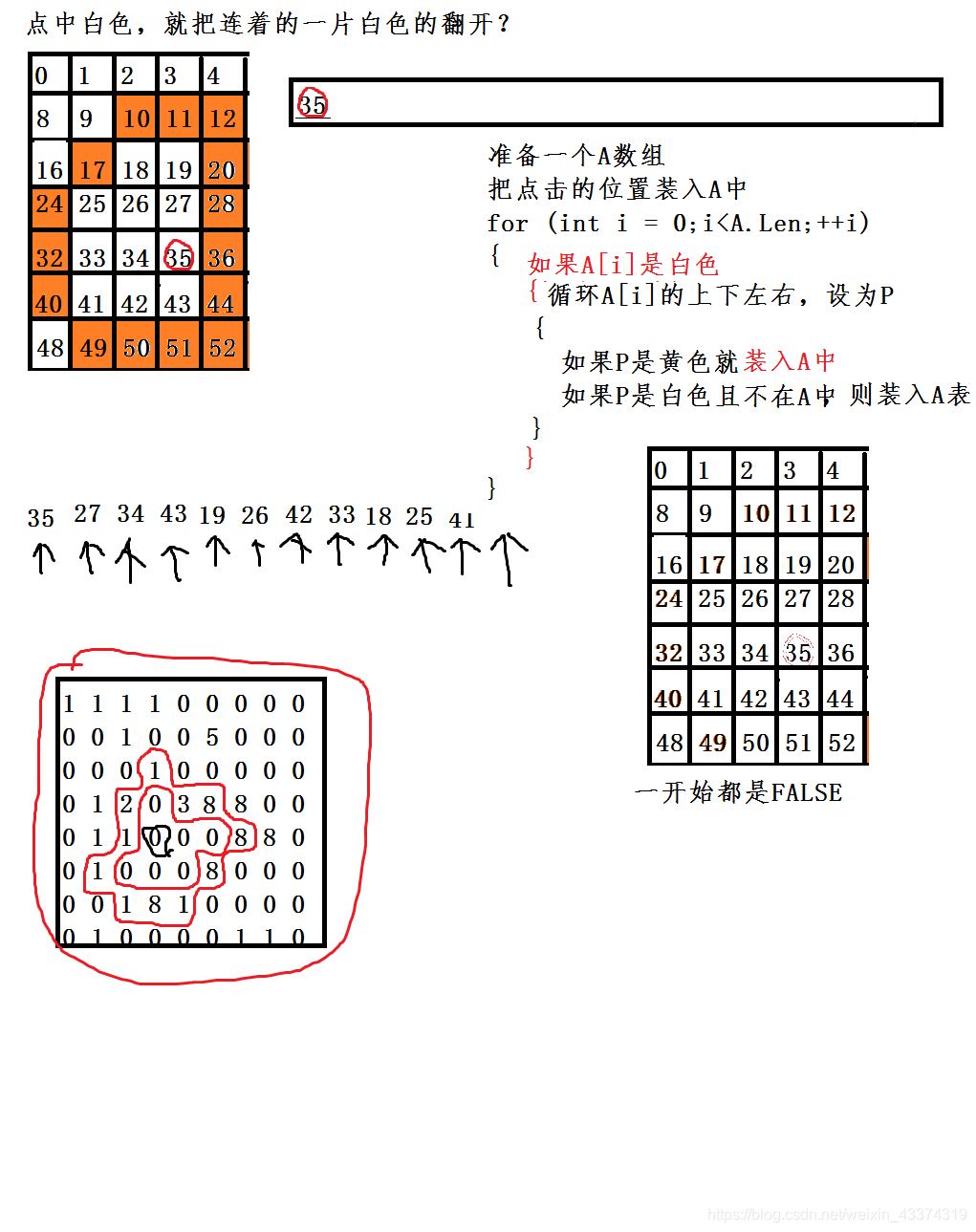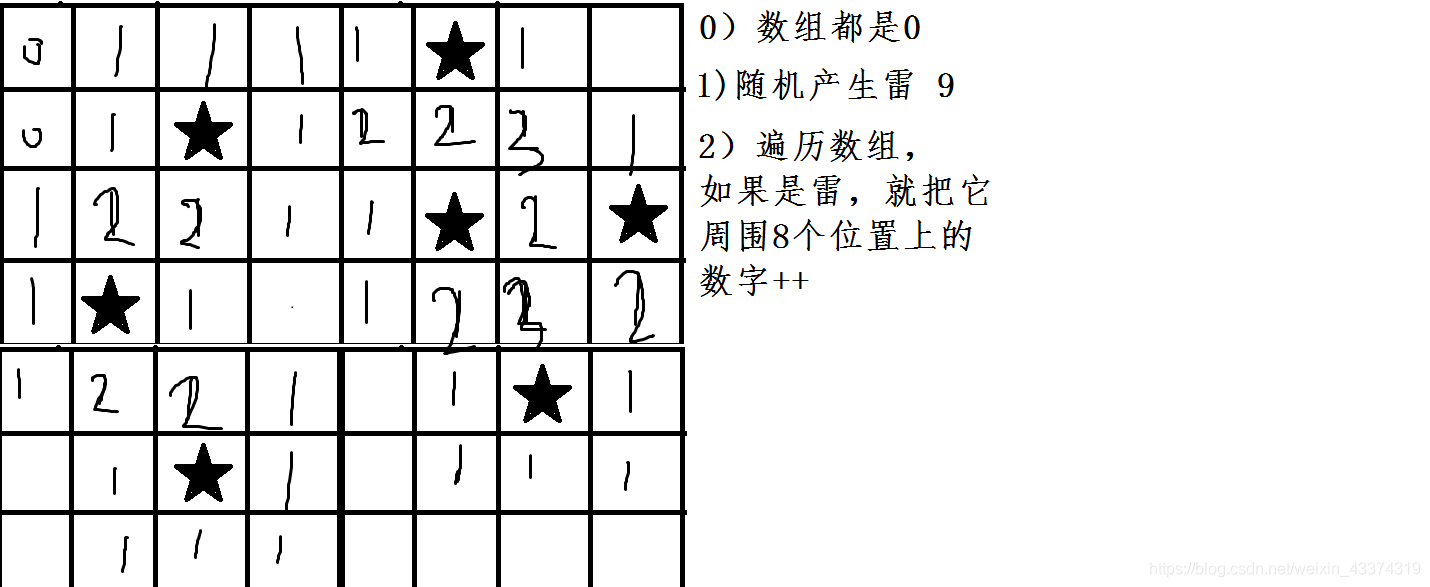

让我们直接来看看代码
#include <iostream>
#include <conio.h>
void main()
{
const int w = 10;
const int h = 10;
int map[w*h] =
{
0,0,0,0,1,0,0,0,0,0,
0,0,1,1,1,1,0,0,0,0,
0,1,0,0,0,0,1,0,0,0,
0,1,0,0,0,0,0,1,0,0,
0,1,0,0,0,0,0,0,1,0,
0,1,0,0,0,0,0,0,1,0,
0,1,0,1,1,1,0,0,1,0,
0,1,0,1,0,1,0,1,1,0,
0,1,1,1,0,1,1,1,0,0,
0,0,0,0,0,0,0,0,0,0
};
//翻开与否的数组
bool show[w*h] = {};
//光标
int px = 0;
int py = 0;
while (1)
{
system("cls");
for (int i = 0;i < w*h; ++i)
{
if (i == px + py * w)
std::cout<<"光";
else if (show[i])
{
if (map[i] == 1)
std::cout<<"①";
else if (map[i] == 0)
std::cout<<" ";
}
else
{
std::cout<<"■";
}
if (i % w== w-1)
std::cout<<std::endl;
}
int a = _getch();
if (a == 'w')
{
if (py > 0) py -- ;
}
else if (a == 's')
{
if (py < h-1) py ++;
}
else if (a == 'a')
{
if (px > 0) px --;
}
else if (a == 'd')
{
if (px < w - 1) px ++;
}
else if (a == ' ')
{
//如果没有翻开
if (!show[px+py*w])
{
if (map[px+py*w] == 1)
show[px+py*w] = true;
else
{
int A[w*h];
int len = 0;
A[len++] = px+py*w;//把点击的位置装入A中
for (int i = 0;i < len; ++i)
{
if (map[A[i]] == 0)
{
int xx[] = {0,0,-1,1};
int yy[] = {-1,1,0,0};
//循环四个方向
for (int k = 0; k < 4; ++k)
{
int x = A[i] % w + xx[k];
int y = A[i] / w + yy[k];
//如果没有出界
if (x >= 0 && x < w && y >= 0 && y < h)
{
//如果是黄色直接翻开
if (map[x+y*w] == 1)
show[x+y*w] = true;
else
{
//判断x+y*w在不在A表中,不在才装入A表
bool zai = false;
for (int i = 0; i < len; ++i)
{ if (A[i] == x+y*w)
{
zai=true;
break;
}
}
if (!zai)
A[len++] = x+y*w;
}
}
}
}
}
//在A表中的所有下标都要翻开
for (int i = 0;i < len; ++i)
{
show[A[i]] = true;
}
}
}
}
}
}
























 177
177

 被折叠的 条评论
为什么被折叠?
被折叠的 条评论
为什么被折叠?








